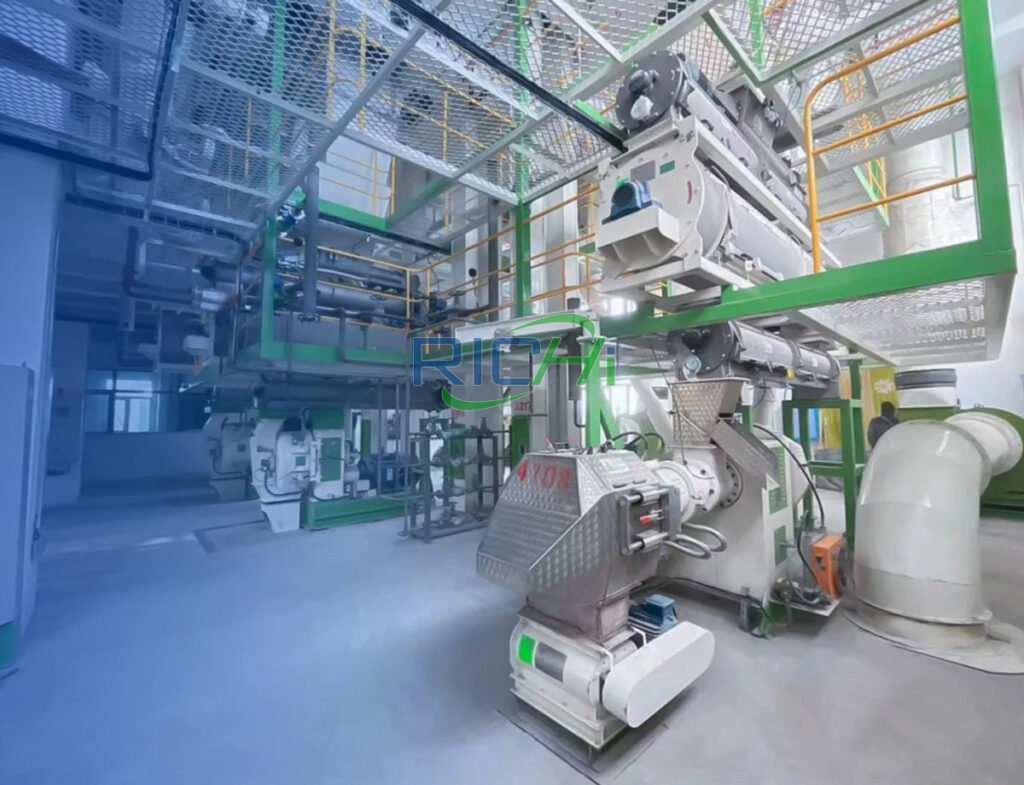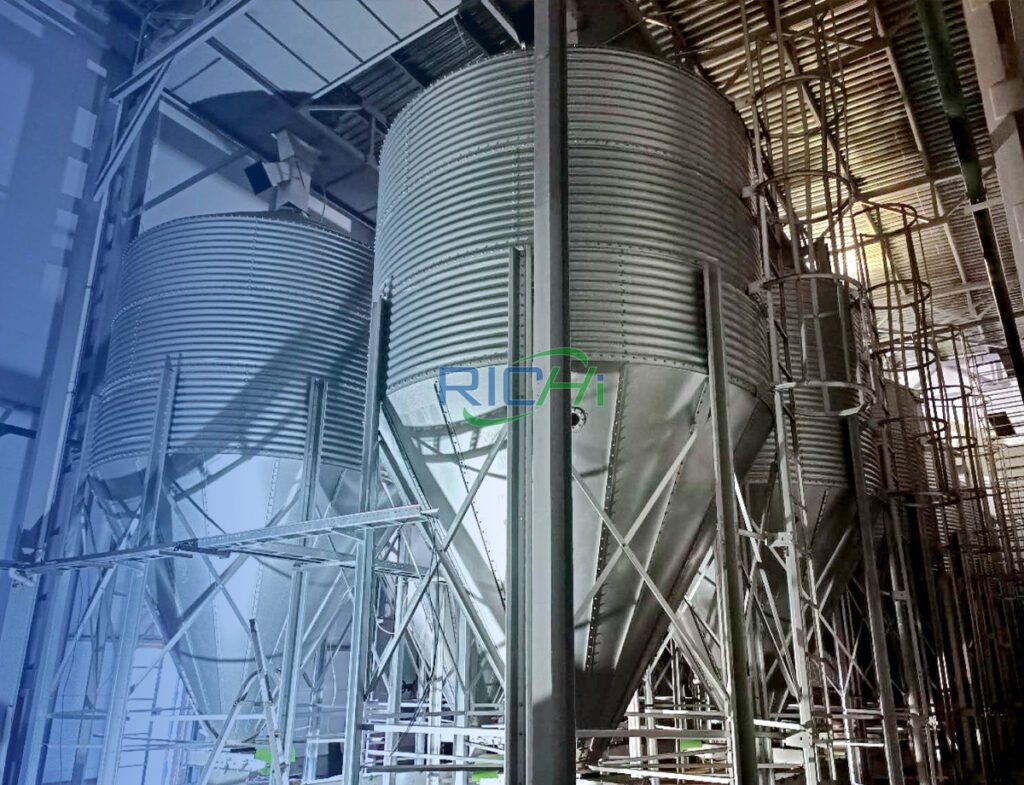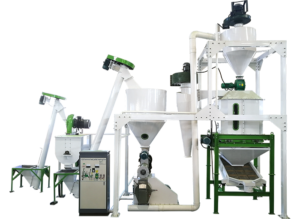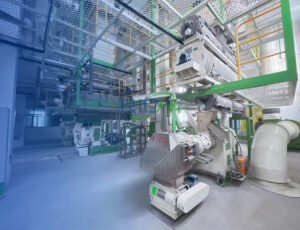
A 5-7 tons per hour (T/H) animal feed making machine represents a significant investment for farmers, feed manufacturers, and agricultural businesses. This capacity is ideal for medium-sized operations looking to produce high-quality animal feed efficiently. The following article outlines the essential components and equipment required for a complete 5-7 T/H animal feed production line.
1. Raw Material Receiving and Cleaning System
The first step in the feed production process involves receiving and cleaning raw materials to ensure quality:
- Silos: Used for storing bulk raw materials such as grains and additives. These silos can hold various quantities based on production needs.
- Cleaning Equipment: This includes equipment like vibrating screens and magnetic separators that remove impurities, dust, and foreign materials from the raw ingredients. A pre-cleaner can also be used to remove larger contaminants.
2. Grinding System
The grinding system is crucial for reducing raw materials to the desired particle size:
- Hammer Mill: A 55 kW hammer mill is commonly used to crush grains and other raw materials into fine particles. This machine is essential for achieving a uniform particle size, which is critical for the subsequent mixing and pelleting processes.
3. Mixing System
Once the raw materials are ground, they need to be mixed thoroughly to ensure a homogeneous feed blend:
- Mixer: An 11 kW single roller double paddle mixer is typically employed for this purpose. This machine ensures that all ingredients, including vitamins and minerals, are evenly distributed throughout the mixture.

4. Batching System
Accurate measurement of raw materials is vital for consistent feed quality:
- Batching Scales: These scales automatically measure and dispense the required quantities of each ingredient based on the specific feed formulation. This system helps maintain consistency and quality in the final product.
5. Pelleting System
The pelleting process is where the mixed feed is transformed into pellets:
- Pellet Mill: The heart of the feed production line, a 55 kW feed pellet making machine compresses the conditioned feed mixture into pellets. The die and roller assembly determines the size and shape of the pellets, typically ranging from 2-8 mm in diameter.
- Conditioner: Before pelleting, the feed mixture is conditioned with steam and water in a conditioner to enhance pellet quality and durability. This step is crucial for achieving the desired moisture content and improving the binding of the pellets.
6. Cooling System
After pelleting, the hot pellets need to be cooled to prevent spoilage:
- Counter-Flow Cooler: This system cools the pellets to ambient temperature, ensuring they are ready for packaging and storage. Proper cooling helps maintain the quality and nutritional value of the feed.
7. Screening and Crumbling System
To ensure uniformity and remove any oversized pellets, a screening and crumbling system is utilized:
- Vibrating Screen: This equipment separates the cooled pellets by size, removing fines and oversized pellets. This step is essential for maintaining product consistency.
- Pellet Crumbler: A pellet crumbler machine breaks down any oversized pellets that may have formed during the pelleting process, ensuring uniformity in the final product.
8. Packing System
The final step in the production process is packaging the finished feed:
- Packing Machine: A DSC-50 packing machine bags the screened pellets into appropriate packaging, such as 25 kg or 50 kg bags, for distribution. This machine ensures accurate weighing and sealing of the bags.
9. Dust Collection System
To maintain a clean and safe working environment, a dust collection system is essential:
- Dust Collector: A box cylinder pulse dust remover captures airborne dust generated during the grinding and pelleting processes. This system helps improve air quality and reduce the risk of fire hazards.
10. Control and Automation System
Modern feed manufacturing plants often incorporate advanced control and automation systems:
- PLC Control Center: A programmable logic controller (PLC) manages and monitors the entire production process, allowing operators to control and adjust parameters as needed for optimal performance.
- Sensors and Monitors: These devices track critical parameters such as temperature, moisture, and flow rates, ensuring that the production process remains efficient and consistent.
Conclusion
A 5-7 T/H feed factory machines consists of various essential components that work together to produce high-quality animal feed efficiently. From the raw material receiving and cleaning system to the grinding, mixing, pelleting, cooling, screening, and packing systems, each piece of equipment plays a critical role in the overall production process.Investing in a complete animal feed manufacturing line not only enhances productivity but also ensures that the feed produced meets the nutritional needs of livestock. By understanding the key equipment involved, operators can make informed decisions when setting up their feed production facilities, ultimately contributing to the success and sustainability of their agricultural operations. As the demand for high-quality animal feed continues to rise, a well-designed feed manufacturing system will be crucial for meeting market needs and ensuring profitability.






